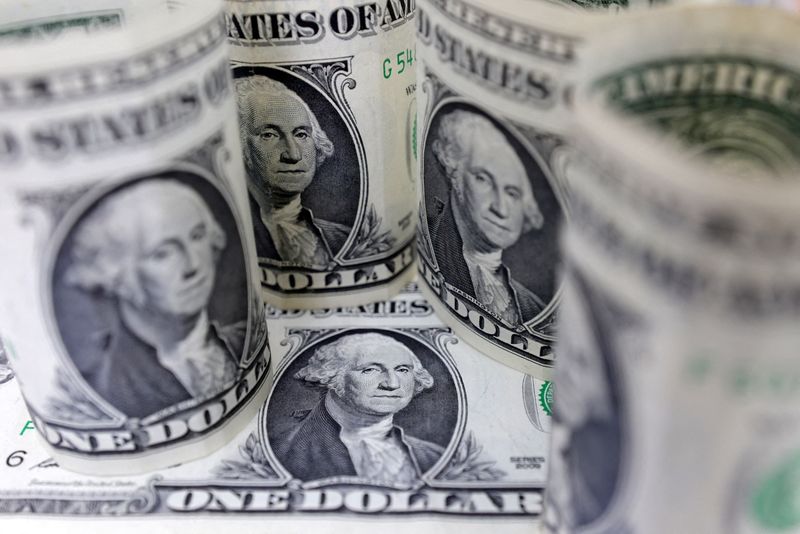Tom Westbrook and Samuel Indyk
LONDON (Reuters) – The dollar retreated slightly from a five-month high on Monday after its biggest weekly gain since 2022, as the prospect of persistently high U.S. interest rates and escalating conflict in the Middle East provided support.
The US currency rose 1.6% against a basket of six major currencies last week after a small but worrying rise in US inflation raised bets on a US rate cut, while European policymakers signaled cuts for several months.
Initial currency moves on Monday appeared to be based more on expectations of a Federal Reserve rate cut than on Iran’s attack on Israel over the weekend, to which broad market reaction was relatively muted.
“Markets are showing signs of relief following Iran’s missile attack on Israel over the weekend,” said Sean Osborne, chief currency strategist at Scotiabank.
“For now, the simmering conflict remains contained.”
Iran warned of a strike on Israel and launched more than 300 drones and missiles over the weekend in response to what it said was an Israeli attack on its consulate in Damascus. The unprecedented drone and missile salvo caused only modest damage, and Iran said it now “considers the matter resolved.”
The index, which measures the currency against a basket of six other currencies, was last down 0.1% at 105.86, just below Friday’s 5-1/2-month high of 106.11.
“If you want a safe-haven currency right now, your best bet is the dollar,” said Chris Turner, ING’s global head of markets, citing ample liquidity, high U.S. deposit rates and U.S. energy independence.
The yen was the main loser on Monday, hitting a 34-year low of 153.97 per dollar, reviving expectations of currency intervention.
Japanese Finance Minister Shunichi Suzuki said on Monday that he was closely monitoring the currency’s movements and that Tokyo was “fully prepared” to act.
“I think if the dollar/yen rate rises to 155, Tokyo will intervene,” said ING’s Turner.
“If there was an even greater escalation in the Middle East, the yen could benefit because it is the largest short position in the market.”
RATE REDUCTION IN US IS DECREASING
The dollar will benefit as investors continue to cut bets on Fed rate cuts and push back the expected start of the policy easing cycle to September following the release of a better-than-expected consumer price index (CPI) report on Wednesday.
“This is a data-light week, so all eyes will be on Fedspeak, where more than half a dozen FOMC voting members are likely to urge patience after last week’s sharp CPI report,” Nicholas Chia, Asia macro strategist in Standard Chartered (OTC). 
The two-year Treasury yield, which is sensitive to changes in interest rate expectations, topped 5% on Thursday. The yield was last 4.95%.
The euro, which last week recorded its biggest weekly percentage fall since late September 2022 as the European Central Bank left the door open for a June rate cut, rose about 0.2% to $1.0659 on Monday but remained close to its five-month minimum. On Friday the price reached $1.06225.
Last week, the pound posted its biggest weekly percentage fall since mid-July, but also recovered slightly to $1.2493.

“Sterling is modestly higher on the day, gaining strength along with some of the riskier currencies as post-weekend market swings ease,” Scotiabank’s Osborne said.
fell below $62,000 on Sunday, down $10,000 or 15% from its highs a week ago. Last time it was $66,209.


